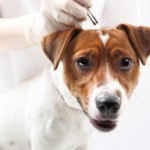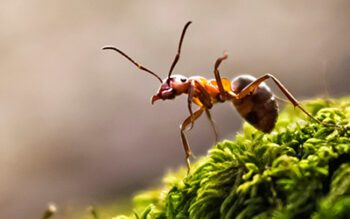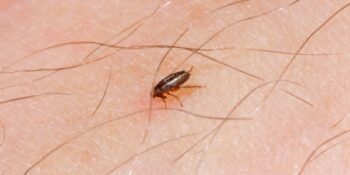
Living on Long Island, there’s an abundance of natural beauty to take in—beaches, parks, campsites, and hiking trails are just a few of the many outdoor attractions. Unsurprisingly, taking advantage of the great outdoors means you’re coming in contact with pesky outdoor pests and risk bringing them into your home.
Fleas are one of the many pests you’re likely to encounter outdoors, whether you’re on a hiking trail with your family, or relaxing in your backyard! These pests hide out in grass, foliage, and dirt, and will latch onto an animal or human and hitchhike back indoors, where they make themselves at home and lay their eggs, often in carpet. Before you know it, there’s a full-blown flea infestation.
Luckily, there are some tell-tale signs of an underlying flea problem that you may be able to recognize before these pests get out of control.
So, What Do Fleas Look Like?
Fleas are tiny, though with a bit of effort, you can usually see them. Adult fleas are only roughly 2.5 millimeters in length, so they’re certainly easy to miss! Often on pets with lighter fur, they are easier to notice.
Aside from their small size, fleas are often a reddish-brown color, oval-shaped, and with hard shells. They have six legs, and their back two legs are longer than the others. Fleas don’t have wings.
Do You Have a Flea Infestation?
As mentioned, there are several indicators that you may have a flea infestation in your home. While flea infestations can sometimes be mistaken for bed bug infestations, due to the itchy bites they cause and their almost invisible presence, here are six ways to tell you probably have a flea problem:
6 Signs of a Flea Infestation
- Are you getting bites that itch, but you can’t see any bugs?
- If you have pets, are they scratching excessively?
- Do you see “flea dirt” in your pets’ fur, or dark specks on the skin that don’t move?
- You see fleas hopping on your furniture, carpet, or curtains.
- Does your pet have hair loss?
- Does your pet have unusual red patches of skin?
Problems Caused by Flea Bites
Even if you only see a couple of fleas, don’t underestimate their power. One female flea can lay up to 50 eggs in a day, so flea problems can quickly get out of hand.
Flea Bites on Humans
Aside from causing itchy red bites and itching, fleas on humans can transmit several illnesses, including typhus and plague (which is less of a concern now than it was in the 14th century, but still has a handful of cases per year), murine typhus, tungiasis, and tularemia.
Flea Bites on Dogs and Flea Bites on Cats
Fleas on dogs typically result in itchy bites, causing scratching, particularly in areas such as the neck, armpits, groin, head, and tail. In more extreme cases, hair loss can occur. Some pets scratch the itchy areas too much, causing this to happen, while others simply have more extreme reactions to flea bites, causing their hair to fall out. In animals, fleas can cause cat scratch disease, tapeworms, anemia, and murine typhus, to name a few.
Allergic Reaction to Flea Bites
In humans, fleas are known to cause skin dermatitis, which usually appears on patches of skin as itchy bumps or a rash. Breathing in “flea dirt,” aka flea poop, has been known to cause asthmatic reactions in humans, as well.
Pets can develop a flea hypersensitivity, or flea bite dermatitis, which can ultimately cause lesions and fur loss due to constant scratching.
How to Get Rid of Fleas in the House
Getting rid of fleas isn’t as simple as a one and done treatment. Often, it takes multiple treatments to eradicate a flea infestation. Why? It all comes down to the flea life cycle.
Start by Understanding the Role of the Flea Life Cycle in Effective Flea Control
For maximum efficiency, flea treatments should be carried out by targeting fleas at the correct stage of their reproductive life cycle. The first step involves targeting adult fleas and fleas in the larval stage. Next, an insect growth regulator targets developing fleas by blocking their growth into adults.
Get a Professional Flea Treatment
Because of their life cycle, fleas are not easily controlled with one-and-done, over-the-counter products, so it’s always best to reach out for professional help when you’re dealing with a flea infestation. Always make sure you’ve invested in a veterinarian-approved flea medicine for dogs and cats if you want to best protect your pets and help prevent potential flea problems year-round.
Prepare for Flea Season on Long Island
The best way to get rid of fleas is to prepare for flea season by implementing a regular pest control service. Suburban Exterminating has a knowledgeable, experienced team of technicians who are familiar with the common pest issues faced by Long Island home owners…including flea infestations!
Choose from one of our three maintenance plans, and make sure you’re covered this flea season! To schedule a free inspection, call (631/516) 864-6900 today!





